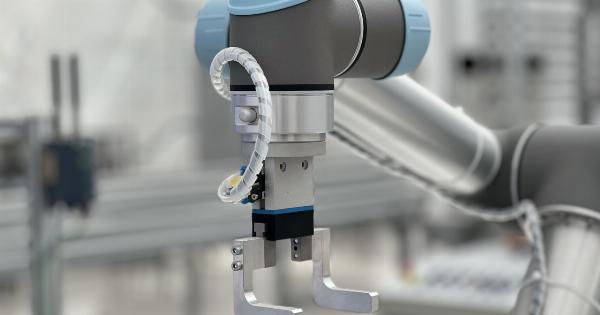Hip arthritis is a debilitating condition that affects millions of people worldwide. It causes pain, stiffness, and reduces the overall quality of life.
Traditional hip replacement surgery has been the gold standard for treating this condition for many years. However, the emergence of robotic-assisted hip arthroplasty, particularly the MAKO system, has revolutionized the way hip replacements are performed. This article explores how the MAKO robotic-assisted hip arthroplasty improves patient outcomes.
The Evolution of Hip Replacement Surgery
Hip replacement surgery, also known as hip arthroplasty, has come a long way since its inception in the 1960s. The first hip replacements involved removing the damaged ball and socket of the hip joint and replacing them with prosthetic components.
Over the years, advancements in surgical techniques and implant materials have led to improved outcomes and patient satisfaction.
What is MAKO Robotic-Assisted Hip Arthroplasty?
The MAKO system is a revolutionary technology that combines the expertise of a skilled orthopedic surgeon with the precision and accuracy of a robotic arm. It utilizes 3D computer imaging and a haptic robotic arm to assist in the surgical procedure.
The surgeon remains in full control throughout the surgery, with the robotic arm acting as a guiding tool.
The Benefits of MAKO Robotic-Assisted Hip Arthroplasty
1. Enhanced Precision: One of the main advantages of the MAKO system is its ability to provide unparalleled precision during surgery.
The 3D computer imaging allows the surgeon to plan the surgery beforehand, ensuring accurate implant placement and optimal joint alignment. This precision leads to better outcomes and reduces the risk of complications.
2. Improved Implant Fit and Function: The MAKO system enables the surgeon to achieve a perfect fit between the patient’s anatomy and the prosthetic components.
The haptic feedback provided by the robotic arm allows for precise shaping and preparation of the bone, resulting in better implant stability and improved joint function.
3. Reduced Soft Tissue Damage: Traditional hip replacement surgeries often involve significant soft tissue damage, leading to prolonged recovery periods and increased pain.
With the MAKO system, the surgeon can create smaller incisions and minimize soft tissue trauma. This less invasive approach results in faster recovery, reduced pain, and shorter hospital stays.
4. Personalized Planning: Each patient’s anatomy is unique, and the MAKO system allows the surgeon to create a personalized surgical plan based on the patient’s specific needs.
The 3D imaging technology provides detailed information about the patient’s bone structure, enabling the surgeon to make precise adjustments throughout the procedure.
5. Early Intervention: The MAKO system can be used for both total hip replacement and partial hip replacement procedures, allowing for early intervention in patients with hip arthritis.
By addressing the condition in its early stages, patients can experience better outcomes and potentially avoid the need for more complex surgeries in the future.
MAKO Robotic-Assisted Hip Arthroplasty Procedure
Once a patient is deemed a candidate for MAKO robotic-assisted hip arthroplasty, the procedure follows several steps:.
Step 1: Preoperative Planning
The surgeon utilizes the CT scan of the patient’s hip to create a virtual 3D model. This model helps in accurately planning the surgery, including determining the size and placement of the prosthetic components.
Step 2: Surgical Site Preparation
The surgeon makes a small incision and exposes the hip joint. The MAKO system establishes a virtual boundary for the robotic arm, preventing any accidental movements outside the planned target area.
Step 3: Robotic-Assisted Component Placement
The surgeon guides the robotic arm to perform the bone preparation according to the preoperative plan. The haptic feedback from the robotic arm ensures precise cuts and shaping of the bone.
The prosthetic components are then placed, taking into account the patient’s unique anatomy and alignment requirements.
Step 4: Surgical Validation
After the prosthetic components are in place, the surgeon validates their position and ensures optimal range of motion, stability, and joint biomechanics. Any necessary adjustments can be made at this stage to achieve the best possible outcome.
Step 5: Closure
Once the surgeon is satisfied with the positioning and stability of the hip joint, the incision is closed using sutures or staples. The surgical area is dressed, and the patient is taken to the recovery area.
Postoperative Recovery and Rehabilitation
Following MAKO robotic-assisted hip arthroplasty, patients typically experience a faster recovery compared to traditional hip replacement surgery.
Physical therapy is an essential part of the rehabilitation process, aiming to improve joint strength, flexibility, and overall function. Most patients can begin walking with the aid of crutches or a walker within a day or two after surgery. Full recovery can take up to several months, depending on individual healing rates and adherence to rehabilitation protocols.
Conclusion
The MAKO robotic-assisted hip arthroplasty has transformed the landscape of hip replacement surgery. Its precision, personalized planning, and improved implant fit result in enhanced patient outcomes, reduced complications, and shorter recovery times.
By combining the expertise of surgeons with cutting-edge technology, the MAKO system continues to pave the way for better hip arthroplasty experiences and improved quality of life for patients with hip arthritis.





























